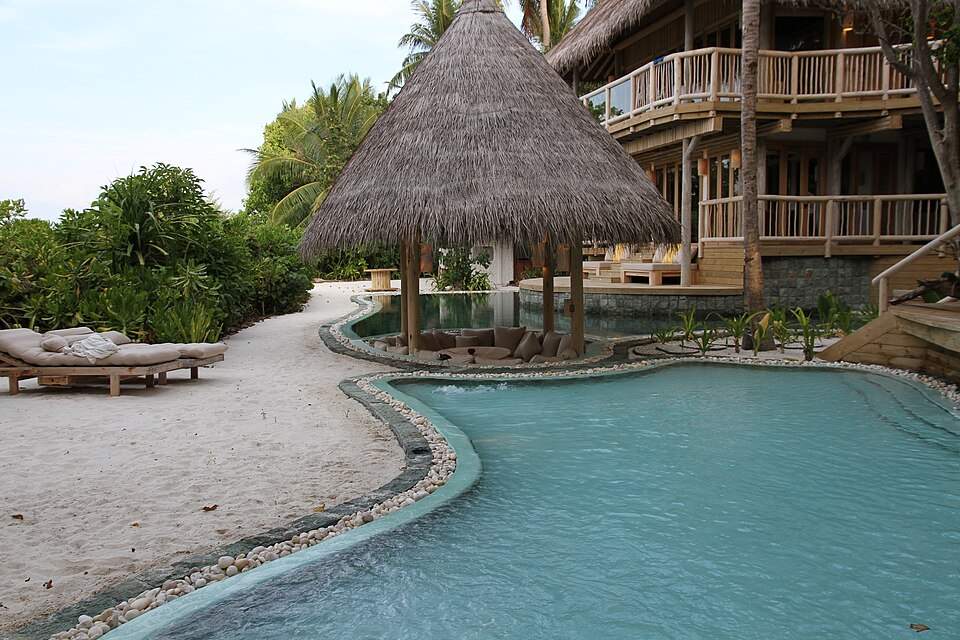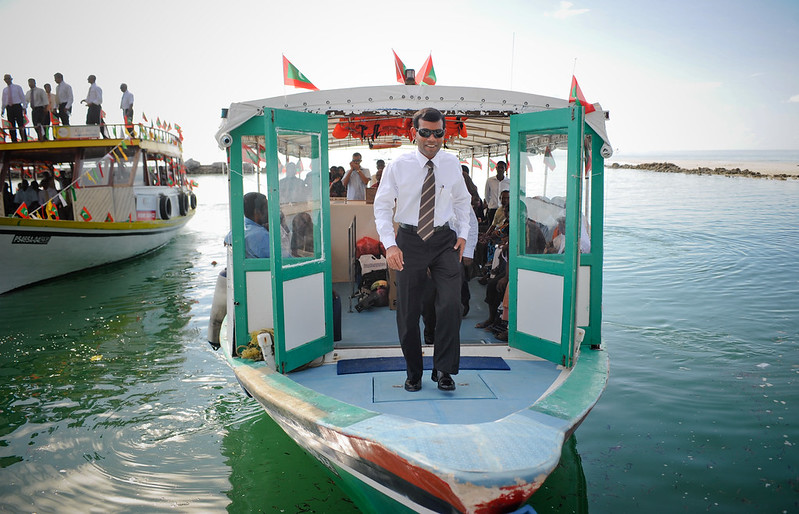Maldives Liveaboard Diving: Complete Guide for 2025

Liveaboard vs. Resort-Based Diving: The Honest Comparison
Let’s start with the fundamental decision that shapes your entire Maldives diving experience. I’ve done both extensively, and each has clear advantages depending on what you value and what kind of trip you’re planning.
Why Choose a Liveaboard
The single biggest advantage of liveaboard diving is geographic reach. The Maldives stretches about 800 kilometers north to south, with 26 atolls scattered across that distance. If you’re based at a resort on one island, you’re realistically limited to dive sites within 30-60 minutes by boat—maybe one or two atolls at most. A liveaboard, on the other hand, cruises between atolls overnight while you sleep, waking you up at a completely different location each morning.
This mobility means access to remote sites that resort-based divers simply cannot reach. Some of the best dive sites in the Maldives—channels in Vaavu Atoll, the deep thilas of Laamu Atoll, the manta aggregations at Hanifaru Bay in Baa Atoll—are too far from major resort areas for day trips. Liveaboards reach these places easily because they’re not returning to a fixed base each night.
Dive frequency is the second major advantage. Most resort-based operations offer 2-tank morning dives, maybe an afternoon dive, and occasionally night dives. You’re looking at 2-3 dives per day maximum. Liveaboards typically schedule 3-4 dives daily as standard: early morning, mid-morning, afternoon, and night dive. Over a week-long trip, that’s potentially 25+ dives compared to 14-18 from a resort. If you’re a diving addict who wants to maximize bottom time, liveaboards deliver.
Cost efficiency is perhaps surprising, but liveaboards often provide better value than resort diving when you calculate cost per dive. A week-long liveaboard might cost $1,500-3,000 depending on the boat’s luxury level and the season. That includes accommodation, all meals, airport transfers, and usually 17-21 dives. Resort diving packages at quality dive resorts can easily cost $80-120 per dive, plus accommodation ($200-500+ per night for decent resorts), plus meals if not included. Do the math and liveaboards frequently come out ahead, especially when you factor in the increased dive count.
The social dynamic on liveaboards creates a unique atmosphere. You’re living with 10-20 other divers for a week, sharing meals, dive briefings, and experiences. Friendships form quickly in this environment. I’ve stayed in touch with people I met on liveaboards years ago—there’s something about spending a week together in such close quarters that bonds people. If you’re traveling solo, liveaboards provide instant community.
Why Choose Resort-Based Diving
Comfort is the most obvious advantage of resort diving. You have a proper room—often a spacious villa—with a comfortable bed, a real bathroom, climate control, and space to spread out. You’re not living out of a small cabin or sharing a bathroom with someone whose morning routine doesn’t quite sync with yours. After diving, you can retreat to your own space, take a long shower, and genuinely relax.
Flexibility matters more than some people realize. At a resort, if you wake up not feeling great and want to skip diving for a day, no problem—lounge by the pool, get a spa treatment, read a book on the beach. On a liveaboard, skipping dives feels wasteful since you’re paying for the package and the boat is already at the dive site. There’s subtle pressure to dive every opportunity, which isn’t always what you want on vacation.
Resorts work better for mixed groups where not everyone dives or where diving skills vary dramatically. If you’re traveling with a non-diving partner, they’ll be miserable on a liveaboard with nothing to do while you’re diving four times daily. Resorts offer activities, beaches, restaurants, and excursions for non-divers. Similarly, if you’re bringing kids or less experienced divers, resorts provide more appropriate conditions and flexibility.
Accessibility is another consideration. Resort diving tends to feature easier sites with milder currents, making it suitable for newer divers or those who aren’t comfortable with challenging conditions. Liveaboards, particularly during the southwest monsoon season, often dive sites with strong currents and deeper depths that require solid intermediate to advanced skills.
Land stability might sound trivial, but if you’re prone to seasickness, living on a boat for a week can be genuinely miserable. I’ve seen people on liveaboards who spent more time feeling nauseous than enjoying the diving. Resorts eliminate this concern—you’re on solid ground between dives.
My Honest Recommendation
If you’re a serious diver who wants to maximize dive time and access the best sites across multiple atolls, choose a liveaboard. If comfort, flexibility, and relaxation between dives matter more than dive count, or if you’re traveling with non-divers, choose a resort. And honestly? Consider doing both—spend a few days at a resort getting acclimated and comfortable, then jump on a liveaboard for a week of intensive diving. That’s what I usually recommend to first-time Maldives visitors.
Understanding Liveaboard Routes and Itineraries
Maldives liveaboards follow established routes that vary by season, focusing on different atolls depending on monsoon patterns and which sides of the archipelago offer the best conditions. Understanding these routes helps you choose the right trip for what you want to see.
Best of Maldives Route (Classic Route)
This is the most popular liveaboard itinerary and typically covers North Male Atoll, South Male Atoll, Ari Atoll, and sometimes Vaavu Atoll. It’s called “Best of” for good reason—this route hits many of the most famous dive sites in the Maldives, including places like Banana Reef, Fish Head, Maaya Thila, and Broken Rock.
The classic route runs year-round and works for all experience levels, though some sites have strong currents requiring advanced skills. You’ll see reef sharks, manta rays (seasonal), good chances of whale sharks (particularly in South Ari during southwest monsoon), turtles, Napoleon wrasses, and healthy coral reefs. Visibility varies by season but generally ranges from 15-35 meters.
This route makes sense for first-time Maldives liveaboard divers because it provides variety without venturing too far from Male. If something goes wrong or you need to cut your trip short, you’re never more than a few hours from the capital. The sites are well-known with established dive protocols, and operators have extensive experience guiding these locations.
Trip length typically runs 7-8 nights, with boats departing Male on Saturday or Sunday and returning the following Saturday or Sunday. You’ll complete 17-21 dives depending on conditions and whether night dives happen every evening. For comprehensive information on the specific dive sites along this route and what makes each special, check out the top dive sites covered by liveaboards guide.
Northern Route (Baa, Lhaviyani, Noonu Atolls)
The northern route ventures into less-visited atolls north of Male, exploring Baa, Lhaviyani, Noonu, and sometimes Raa Atolls. This route runs primarily during the northeast monsoon (December-April) when eastern sides of the atolls offer calm, protected conditions. During the southwest monsoon, operators switch focus to the western sides of these same atolls.
The highlight of the northern route is Hanifaru Bay in Baa Atoll, a UNESCO biosphere reserve famous for manta ray aggregations during the southwest monsoon. During peak season (June-October), hundreds of mantas gather to feed on plankton concentrations, creating one of the world’s most spectacular marine wildlife experiences. Note that Hanifaru is snorkeling-only by regulation, but surrounding sites offer excellent diving with mantas at cleaning stations.
Northern sites tend to be less crowded than the classic route locations. You’ll encounter pristine reefs, healthy coral coverage, and good populations of sharks and rays. The channels in Lhaviyani Atoll (like Kuredu Express) feature strong currents and excellent pelagic action. Noonu Atoll offers remote thilas with diverse marine life.
Trip length usually runs 8-10 nights due to the greater distances involved. This route suits experienced divers comfortable with current and remote locations where assistance isn’t immediately available. The diving is phenomenal, but you’re further from infrastructure than on the classic route.
Central Route (Rasdhoo, Ari, Felidhu, Mulaku Atolls)
The central route explores the mid-section of the Maldives, venturing south from Male through Rasdhoo, Ari, Felidhu (Vaavu), and Mulaku Atolls. This route balances famous sites with lesser-known gems, providing variety in topography and marine life.
Rasdhoo Atoll features Rasdhoo Madivaru, a cleaning station that attracts mantas and is also known for hammerhead shark sightings during dawn dives. Ari Atoll provides the standard whale shark encounters and healthy reef systems. Felidhu channels offer strong current dives with excellent shark action. Mulaku Atoll takes you into less-dived territory with pristine reef systems.
This route works year-round with itinerary adjustments based on monsoon patterns. During the northeast monsoon, boats focus on eastern channel entrances and eastern atoll sides. Southwest monsoon shifts the focus to western sides and protected channels.
Marine life diversity is excellent on the central route—you’ll potentially see hammerheads, whale sharks, mantas, grey reef sharks, white-tip reef sharks, eagle rays, massive schools of fish, turtles, and Napoleon wrasses all on a single trip. The central route probably offers the highest biodiversity of the standard liveaboard itineraries.
Trip length typically runs 8-10 nights. Experience level varies by site—some are suitable for advanced open water divers, others require solid current diving skills. Most operators assess diver experience during the check-out dive and adjust site selection accordingly.
Southern Route (Laamu, Thaa, Huvadhoo Atolls)
The southern route heads to the deep south of the Maldives, exploring atolls that see relatively few divers due to their distance from Male. Laamu, Thaa, and Huvadhoo Atolls offer a more adventurous liveaboard experience with remote reefs, strong currents, and less predictable conditions.
Huvadhoo Atoll deserves special mention as one of the largest atolls in the world. The channels here are massive, creating powerful current dives where pelagic action is intense. Eagle rays are common, as are large schools of predatory fish. The reef health in southern atolls is generally excellent with less human impact than northern regions.
The southern route runs primarily during the northeast monsoon when conditions allow for safe passage. Southwest monsoon can make the journey uncomfortable with rough seas between atolls. This is definitely advanced diving territory—strong currents, deep channels, remote locations, and changing conditions require solid skills and comfort with challenging dives.
Trip length usually runs 10-14 nights due to the long distances involved. The boat spends significant time cruising between Male and the southern atolls, so fewer days are spent actually diving compared to the classic route. But if you’re after adventure, pristine reefs, and sites that few other divers visit, the southern route delivers.
What to Expect on a Maldives Liveaboard
Let me walk you through a typical day on a liveaboard so you know exactly what you’re signing up for. Schedules vary slightly between boats and operators, but this represents the standard experience.
Daily Schedule
You’ll wake early—usually around 6:30-7:00 AM—for a light breakfast of fruit, toast, coffee, and juice. The first dive happens around 7:30 AM while conditions are calm and marine life is most active. This early morning dive typically lasts 45-60 minutes depending on depth and air consumption.
After surfacing, it’s back to the boat for a proper breakfast around 9:00 AM. Eggs, pancakes, meats, cereals—liveaboards feed you well. You’ll have 2-3 hours of surface interval before the second dive, time to relax on the sun deck, review photos, read, or nap. Some divers immediately start planning the next dive site, checking the briefing board and preparing gear.
The second dive happens around 11:30 AM or noon, again lasting 45-60 minutes. You’ll surface for lunch around 1:30 PM—buffet style with multiple dishes, salads, and desserts. Meals on liveaboards are surprisingly good; I’ve eaten better food on budget boats than at some mid-range resorts.
Afternoon brings another 2-3 hour surface interval. This is prime nap time, as the morning dives and warm weather create perfect sleeping conditions. The boat is usually cruising to the next site during this period, so you’ll feel gentle movement. Some people love the rocking motion; others find it makes them drowsy (in a good way).
The third dive happens around 4:00-5:00 PM, catching the late afternoon light and increased marine activity as nocturnal species start emerging. After surfacing, you’ll have an hour to rinse gear, shower, and prepare for dinner around 7:30 PM. Dinners are social affairs with everyone gathering to share stories from the day’s dives.
Night dives happen 3-5 times per week, usually starting around 8:30-9:00 PM. These are optional—if you’re tired or not interested, skip them. But night diving in the Maldives is magical, revealing completely different marine life than daytime. I always do at least a few night dives per trip.
After the night dive or dinner, people socialize, review photos, or head to bed. Most divers are asleep by 10:00-11:00 PM because that 6:30 AM wake-up comes early. Repeat this schedule for seven days straight and you’ll understand why liveaboards are intensive experiences.
Cabin Life and Facilities
Cabins on liveaboards range from basic to luxurious depending on the boat category. Budget boats offer small cabins with bunk beds, a porthole window, and compact ensuite bathroom (sink, toilet, shower all in a very small space). Think of it as functional rather than comfortable—you’re not spending much time in the cabin anyway.
Mid-range boats provide slightly larger cabins with either twin beds or a double, proper windows, air conditioning, and more spacious bathrooms. You’ll have storage space for gear, a small desk or shelf, and enough room to move around without bumping into things constantly.
Luxury liveaboards offer proper staterooms with queen or king beds, sitting areas, significant storage, large bathrooms with separate shower stalls, and sometimes amenities like mini-fridges, entertainment systems, or even private balconies. These approach resort-level comfort but at premium prices.
Common areas on liveaboards include a main salon with dining area, entertainment system, and comfortable seating. Most boats have a sun deck with loungers, shaded areas, and sometimes a hot tub. The dive deck is where you’ll spend significant time—gearing up, rinsing equipment, and preparing for dives. Good dive decks have individual storage areas for each diver, camera tables, rinse tanks, and fresh water showers.
Food Quality and Dietary Accommodations
I’ve been pleasantly surprised by food quality on Maldives liveaboards. Most boats serve a mix of international cuisine—Asian dishes, European options, and Maldivian specialties. Breakfast offers both continental and cooked options. Lunch and dinner are typically buffet-style with 3-5 main dishes plus sides, salads, and desserts.
Dietary restrictions can usually be accommodated if you notify the operator in advance. Vegetarian options are standard on most boats. Vegan, gluten-free, and other special diets are manageable with advance notice, though options may be more limited. Don’t expect the variety you’d find at a resort with multiple restaurants—you’re eating what the boat’s galley can prepare.
Snacks appear regularly between dives—fruit, cookies, sandwiches. Coffee, tea, and water are available throughout the day. Alcohol is available on some boats (the Maldives has complicated alcohol regulations), either included in the price or available for purchase. Some operators run bar tabs that you settle at the end of the trip.
Choosing the Right Liveaboard Boat
Not all liveaboards are created equal. The boat itself dramatically impacts your experience, and choosing the right one requires understanding what you’re paying for at different price points.
Budget Liveaboards ($1,200-1,800 per week)
Budget boats like MV Stingray, MV Sharifa, and MV Eagle Ray provide functional diving platforms without frills. Cabins are small with basic amenities. Common areas are modest. Food is good but not gourmet. Dive operations are professional—you’re getting quality diving even if the accommodations are basic.
These boats work well for younger divers, solo travelers on a budget, or anyone who prioritizes diving over comfort. You’ll spend minimal time in your cabin anyway, so small quarters aren’t necessarily a dealbreaker. The money you save can fund additional trips or longer travel in the region.
Expect to share space. Budget boats typically host 16-20 divers plus crew, so the sun deck and salon get crowded. If you value solitude and personal space, this might feel cramped. But if you’re social and don’t mind close quarters, the communal atmosphere can be fun.
Mid-Range Liveaboards ($1,800-2,800 per week)
Mid-range options like MV Sachika, Emperor Explorer, and Blue Voyager offer better accommodations and amenities without reaching luxury territory. Cabins are more spacious with better bathrooms. Common areas are comfortable with more seating and entertainment options. Food quality steps up with more variety and better presentation.
These boats often feature nicer dive decks with better organization and camera facilities. If you’re shooting underwater photography or video, the improved camera tables, rinse tanks, and charging stations matter. Some mid-range boats include nitrox in the base price, while budget boats charge extra.
This price range offers the best value in my opinion—comfortable enough to feel like a proper vacation, good enough diving operations to access all the best sites, but not so expensive that you’re paying for luxury you don’t need. I’ve done probably 60% of my Maldives liveaboards in this category.
Luxury Liveaboards ($2,800-4,500+ per week)
Luxury boats like Scubaspa Yang, Emperor Serenity, and Maldives Aggressor provide resort-level comfort on the water. Spacious cabins, some with private balconies. Gourmet dining with wine pairings. Spa services including massages. Hot tubs and sun deck bars. These are floating hotels that happen to take you diving.
The diving operations on luxury boats are top-tier—experienced guides, excellent equipment, small group sizes, and personalized service. Camera facilities include dedicated photography guides and advanced rinse systems. Some luxury boats offer underwater scooters, rebreather support, or technical diving services.
Who are luxury liveaboards for? Divers who want the best of both worlds—accessing remote dive sites while maintaining high comfort levels. Couples or small groups celebrating special occasions. Underwater photographers who need professional support. Anyone willing to pay premium prices for premium experiences.
Booking Your Liveaboard Trip
Once you’ve decided on a liveaboard, actually booking the trip requires some planning and understanding of how pricing and availability work.
When to Book
Peak season liveaboards (December-April, particularly February) fill up 4-6 months in advance, sometimes earlier for popular boats. If you have specific dates in mind or want a particular boat, book early. I’m talking as soon as you have confirmed vacation time—don’t wait until “later” because spaces disappear fast.
Low season (May-November) offers more flexibility with booking windows of 1-3 months often sufficient. Last-minute deals appear frequently as operators try to fill spaces, so if you’re spontaneous and can handle the uncertainty, you might score discounts by booking 2-4 weeks out.
Special itineraries like the northern route with Hanifaru Bay access during manta season require early booking—6+ months for peak weeks in July-August. These trips sell out quickly because the manta aggregations are bucket-list experiences that draw divers specifically for that purpose.
Pricing and What’s Included
Standard liveaboard pricing includes accommodation in shared or private cabins, all meals, drinking water and soft drinks, airport transfers, and diving (typically 3-4 dives per day, occasionally 5 on blue water days). Most boats include weights and tanks but charge extra for equipment rental if you don’t bring your own.
Nitrox availability varies—some boats include it free, others charge $100-200 per week for unlimited nitrox fills. If you’re nitrox certified, confirm costs before booking since this can add up. Diving with nitrox on liveaboards makes sense given the multi-dive days—longer bottom times and shorter surface intervals.
What’s NOT typically included: alcoholic beverages (sometimes), equipment rental ($200-400 per week for full gear), marine park fees ($10-60 depending on atolls visited), tips for crew and guides (recommended $100-200 per guest per week depending on service quality), and Hanifaru Bay permits if that’s part of the itinerary ($100-150).
For detailed cost breakdowns and how to maximize value when booking, including finding deals during different seasons, check the affordable dive insurance options guide which covers budget strategies for Maldives diving trips.
Seasonal Pricing Variations
Prices fluctuate significantly based on season. Peak season (December-April) commands full price or premium pricing during holidays. Shoulder seasons (November and May) see moderate discounts of 15-25%. Deep low season (June-October) offers the biggest savings at 30-50% off peak prices.
Christmas, New Year, and Chinese New Year periods charge premium rates—expect 20-40% above standard peak season pricing. If you’re flexible with dates, avoiding these holiday weeks saves considerable money while still enjoying excellent dry season conditions.
Early booking discounts appear occasionally—5-15% off if you book and pay 6-12 months in advance. Last-minute deals during low season can reach 30-50% off, but you’re gambling on availability and accepting the challenging monsoon conditions. For comprehensive information on which months offer the best balance of conditions and pricing, the planning your liveaboard around the seasons guide breaks down the trade-offs month by month.
Booking Direct vs. Through Agents
You can book liveaboards either directly with the operator or through dive travel agents. Direct booking sometimes offers slightly better prices since there’s no agent commission, but agents provide value through expertise—they know which boats are reliable, which itineraries work best, and they handle logistics including flight coordination and travel insurance.
Agents are particularly valuable for first-time liveaboard divers who aren’t familiar with the boats or routes. They can match your experience level, budget, and preferences with appropriate options. They also handle issues if something goes wrong—if you book direct and have problems, you’re dealing directly with the operator in a foreign country.
Reputable dive travel agents specializing in the Maldives include Dive Worldwide, Blue Water Dive Travel, Dive Zone, and Master Liveaboards. They all work with multiple boats and can provide unbiased recommendations based on your requirements.
Practical Considerations and Tips
A few final practical points that’ll make your liveaboard experience smoother.
What to Pack
Space is limited on liveaboards, so pack efficiently. Bring reef-safe sunscreen (regular sunscreen damages coral), seasickness medication even if you think you won’t need it, a reusable water bottle, spare batteries for dive computers and cameras, and a power strip since cabin outlets are limited.
Diving gear: bring your own mask, computer, and wetsuit at minimum. Rental gear is available but it’s always better to dive with equipment you know fits and works. A 3mm full wetsuit is standard for Maldives year-round. If you run cold, consider a 5mm for night dives or deep dives where thermoclines bring cooler water.
Camera equipment should include extra batteries, memory cards, and lens cleaning supplies. Many boats have camera rinse tanks, but bringing your own rinse bucket ensures proper equipment care. Underwater lights are essential for night dives and for bringing out colors during day dives below 20 meters.
Clothing: casual and comfortable. You’ll live in swimsuits, board shorts, and t-shirts. Bring one set of nicer clothes for the final dinner, but this isn’t a dress-up vacation. Laundry service is available on most boats for a fee.
Seasickness Management
Even if you don’t typically get seasick, consider bringing medication. The Maldives has calm waters most of the year, but the boat moves constantly and some people are sensitive to motion. Over-the-counter medications like Dramamine or Bonine work for most people. Prescription scopolamine patches are more effective for severe cases—get a prescription before your trip.
Natural remedies include ginger supplements, staying hydrated, and keeping your eyes on the horizon rather than looking down. Sleeping and eating regularly help stabilize your system. If you feel nauseous, stay on deck in fresh air rather than retreating to your cabin where the motion feels worse.
Respecting Boat Etiquette
You’re living in close quarters with strangers, so basic courtesy matters. Keep noise down early morning and late evening. Rinse gear properly so salt water doesn’t corrode equipment or create slippery decks. Show up on time for briefings and dives—everyone waits if you’re late. Tip the crew appropriately at the end—they work hard to make your trip successful.
Photography etiquette: don’t block other divers getting their shots, and never harass marine life for the perfect picture. I’ve seen photographers chase mantas or sharks for images—this is terrible practice that disrupts natural behavior. Be patient, let animals come to you, and respect their space.
Is a Maldives Liveaboard Right for You?
After all this information, how do you decide if a liveaboard suits your diving style and vacation preferences? Here’s my honest assessment.
Liveaboards work best for dedicated divers who prioritize diving over comfort and who have solid skills managing current, depth, and buoyancy. If you’ve got 30+ logged dives, are comfortable in varying conditions, and genuinely want to maximize your diving time, a liveaboard is probably perfect. If you’re newly certified, uncomfortable with current, or want a vacation that’s more than just diving, a resort might be better.
Think about your comfort with close quarters and social situations. If you need personal space and alone time, liveaboards can feel claustrophobic. If you enjoy meeting new people and don’t mind communal living, the social dynamic is one of the best parts of the experience.
Consider seasickness honestly. If you know you’re prone to motion sickness and medication doesn’t help, spending a week on a boat could be miserable. Resorts eliminate this concern completely.
Budget matters but shouldn’t be the only factor. Yes, liveaboards often cost less per dive than resort diving. But if you’d enjoy the resort experience more—the room, the spa, the flexibility—then the higher cost might be worth it. Don’t choose a liveaboard purely for budget reasons if you’d actually prefer a resort.
My recommendation for first-time Maldives visitors remains the same: if you’re a serious diver with good skills, book a liveaboard. You’ll access the best sites, maximize dive time, and get the fullest possible Maldives diving experience. If you’re less experienced, traveling with non-divers, or prioritize comfort and flexibility, start with a resort. You can always do a liveaboard on your next trip once you’ve gotten a feel for Maldivian diving.
The Maldives rewards intensive diving. The diversity across atolls, the different marine life at various sites, the channels versus thilas versus reefs—you want to experience as much as possible. Liveaboards deliver this breadth in a way resort-based diving simply cannot. Yes, it requires commitment and comfort with intensive diving. But if you’re willing to embrace the liveaboard lifestyle, it’s genuinely the best way to dive one of the world’s premier underwater destinations.
Book your trip, pack your gear, load up on seasickness medication just in case, and prepare for a week that’ll probably rank among your best diving experiences. The Maldives from a liveaboard perspective is diving at its finest—varied sites, abundant marine life, crystal-clear water (seasonally), and that incredible feeling of waking up each morning at a completely new location, ready to explore whatever underwater wonders wait below.











